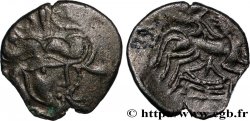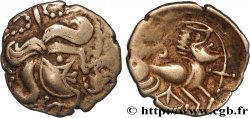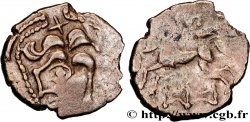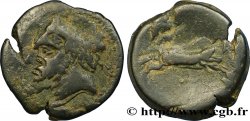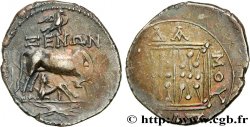Live auction - bga_507497 - GALLIA - ARMORICA - OSISMII (Area of Carhaix - Finistère) Statère composite en bas électrum, à la chevelure rayonnante, DT. 3625
You must signin and be an approved bidder to bid, LOGIN TO BID. Accounts are subject to approval and the approval process takes place within 48 hours. Do not wait until the day a sale closes to register. Clicking on "BID" constitutes acceptance of the terms of use of cgb.fr private live auctions.
Bids must be placed in whole Euro amounts only. The sale will start closing at the time stated on the item description; any bids received at the site after the closing time will not be executed. Transmission times may vary and bids could be rejected if you wait until the last second. For further information check the Live auction FAQ
All winning bids are subject to a 18% buyer’s fee.
All winning bids are subject to a 18% buyer’s fee.
| Estimate : | 6 000 € |
| Price : | 3 800 € |
| Maximum bid : | 3 800 € |
| End of the sale : | 04 December 2018 15:08:30 |
| bidders : | 1 bidder |
Type : Statère composite en bas électrum, à la chevelure rayonnante, DT. 3625
Date: c. 80-50 AC.
Mint name / Town : Brest (29)
Metal : electrum
Diameter : 19,5 mm
Orientation dies : 9 h.
Weight : 7,13 g.
Rarity : R3
Coments on the condition:
Exemplaire dans un état de conservation remarquable pour le type ! Monnaie complète des deux cotés. Joli droit. La monnaie a été nettoyée anciennement
Obverse
Obverse legend : ANÉPIGRAPHE.
Obverse description : Tête à droite, la chevelure rayonnante.
Reverse
Reverse legend : ANÉPIGRAPHE.
Reverse description : Cheval galopant à droite avec un triangle au-dessus de la croupe ; un buste humain droite, entre les jambes du cheval.
Commentary
L’attribution du bga_228343 (classé Namnète en accord avec le Nouvel Atlas) nous semble désormais à revoir en faveur des Osismes.
Cette série est bien connue, mais ses spécimens semblent peu nombreux ! Dès 1873, E. Hucher publie le dessin d’un statère de cette série (Tome I, fig. n° 87) qui serait celui du MAN. Bien que l’iconographie s’en distingue nettement, il était alors associé aux monnayages pictons et santons, probablement en rapport avec la facture et le type de métal utilisé. L’exemplaire de la BN est indiqué comme provenant de la Loire à Angers (Maine-et-Loire).
Bien que très rare, on peut remarquer que le petit buste humain à droite entre les jambes du cheval (probablement une dégénérescence de l’hippophore) est une constante alors que le triangle au-dessus de la croupe du cheval n’est pas systématique et il en va de même pour la rouelle devant le poitrail
Toutes variantes confondues, ce statère serait le cinquième exemplaire publié, après celui de la BN qui illustre le Nouvel Atlas (DT. 3625), l’exemplaire du MAN, décrit comme “inaccessible”, le bga_228343 (qui, bien que dans un piètre état, a le mérite d’exister) et enfin le bga_325312, jusqu’ici considéré comme le plus bel exemplaire !
.
The attribution of bga_228343 (classified as Namnete in accordance with the New Atlas) now seems to us to be reviewed in favor of Osisms.
This series is well known, but its specimens seem few in number! As early as 1873, E. Hucher published the drawing of a stater from this series (Volume I, fig. No. 87) which would be that of the MAN. Although the iconography is clearly different, it was then associated with Picton and santon coinage, probably in relation to the manufacture and the type of metal used.. The BN example is indicated as coming from the Loire in Angers (Maine-et-Loire).
Although very rare, we can notice that the small human bust on the right between the horse's legs (probably a degeneration of the hippophore) is a constant while the triangle above the horse's rump is not systematic and the same goes for the wheel in front of the chest. All variants combined, this stater would be the fifth published example, after that of the BN which illustrates the New Atlas (DT. 3625), the MAN example, described as “inaccessible”, bga_228343 (which, although in a poor state, has the merit of existing) and finally bga_325312, until now considered the most beautiful example!
Cette série est bien connue, mais ses spécimens semblent peu nombreux ! Dès 1873, E. Hucher publie le dessin d’un statère de cette série (Tome I, fig. n° 87) qui serait celui du MAN. Bien que l’iconographie s’en distingue nettement, il était alors associé aux monnayages pictons et santons, probablement en rapport avec la facture et le type de métal utilisé. L’exemplaire de la BN est indiqué comme provenant de la Loire à Angers (Maine-et-Loire).
Bien que très rare, on peut remarquer que le petit buste humain à droite entre les jambes du cheval (probablement une dégénérescence de l’hippophore) est une constante alors que le triangle au-dessus de la croupe du cheval n’est pas systématique et il en va de même pour la rouelle devant le poitrail
Toutes variantes confondues, ce statère serait le cinquième exemplaire publié, après celui de la BN qui illustre le Nouvel Atlas (DT. 3625), l’exemplaire du MAN, décrit comme “inaccessible”, le bga_228343 (qui, bien que dans un piètre état, a le mérite d’exister) et enfin le bga_325312, jusqu’ici considéré comme le plus bel exemplaire !
.
The attribution of bga_228343 (classified as Namnete in accordance with the New Atlas) now seems to us to be reviewed in favor of Osisms.
This series is well known, but its specimens seem few in number! As early as 1873, E. Hucher published the drawing of a stater from this series (Volume I, fig. No. 87) which would be that of the MAN. Although the iconography is clearly different, it was then associated with Picton and santon coinage, probably in relation to the manufacture and the type of metal used.. The BN example is indicated as coming from the Loire in Angers (Maine-et-Loire).
Although very rare, we can notice that the small human bust on the right between the horse's legs (probably a degeneration of the hippophore) is a constant while the triangle above the horse's rump is not systematic and the same goes for the wheel in front of the chest. All variants combined, this stater would be the fifth published example, after that of the BN which illustrates the New Atlas (DT. 3625), the MAN example, described as “inaccessible”, bga_228343 (which, although in a poor state, has the merit of existing) and finally bga_325312, until now considered the most beautiful example!







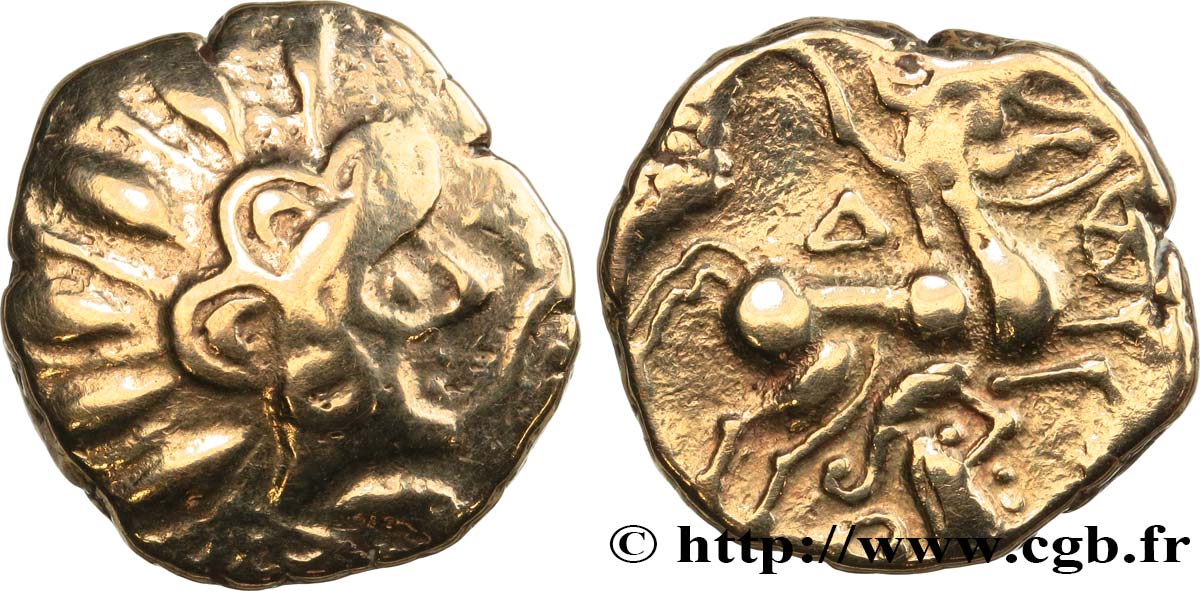
 Report a mistake
Report a mistake Print the page
Print the page Share my selection
Share my selection Ask a question
Ask a question Consign / sell
Consign / sell
 Full data
Full data